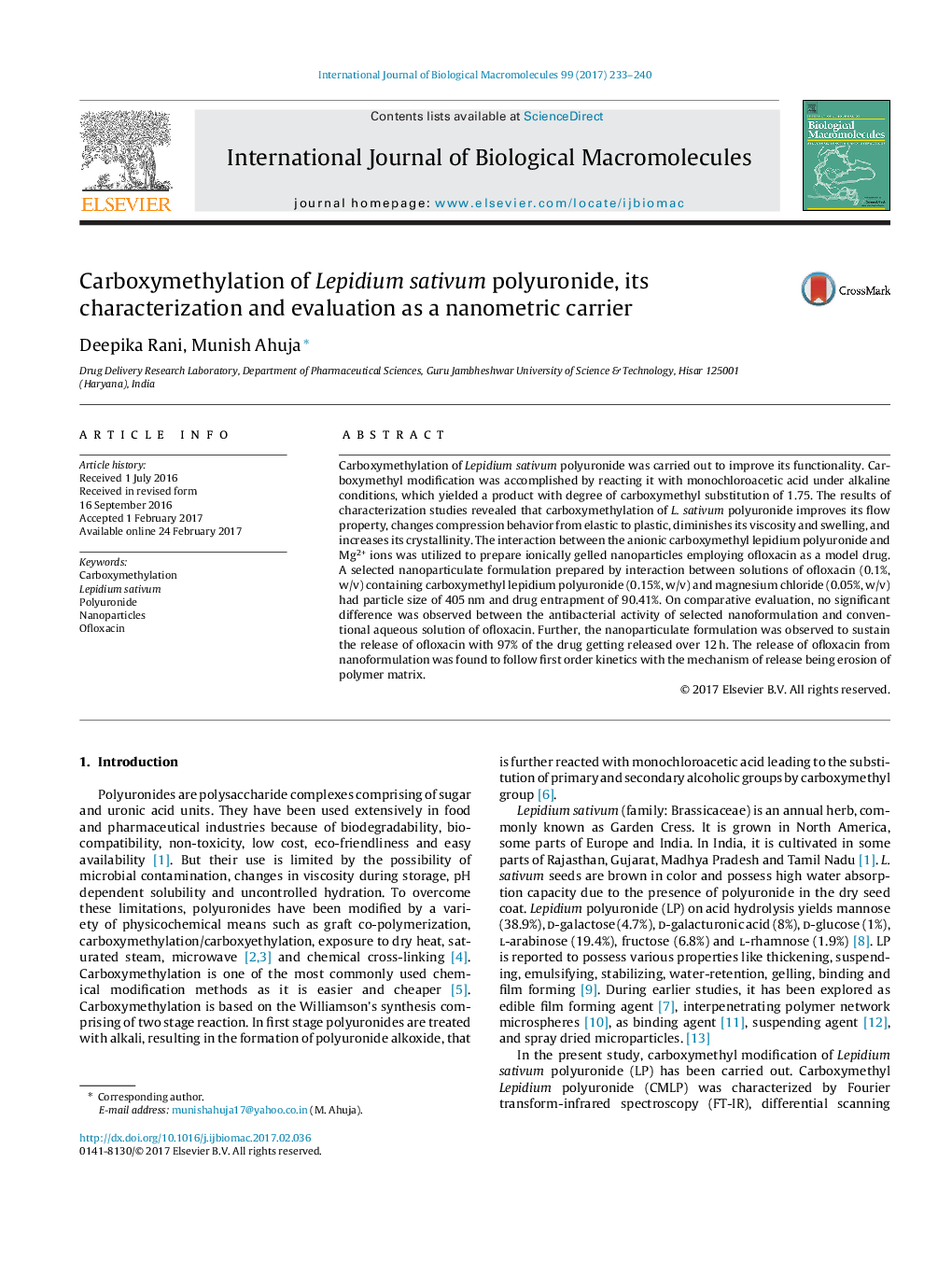| کد مقاله | کد نشریه | سال انتشار | مقاله انگلیسی | نسخه تمام متن |
|---|---|---|---|---|
| 5512054 | 1540219 | 2017 | 8 صفحه PDF | دانلود رایگان |

- Carboxymethyl Lepidium polyuronide (CMLP) is prepared by Williamson's synthesis.
- Carboxymethylation improves flow properties and decreases viscosity of Lepidium polyuronide.
- CMLP interacts with cations to form ionically gelated nanoparticles.
- Ofloxacin loaded CMLP nanoparticles were prepared by interacting with magnesium chloride.
- The formulation followed first order kinetics.
Carboxymethylation of Lepidium sativum polyuronide was carried out to improve its functionality. Carboxymethyl modification was accomplished by reacting it with monochloroacetic acid under alkaline conditions, which yielded a product with degree of carboxymethyl substitution of 1.75. The results of characterization studies revealed that carboxymethylation of L. sativum polyuronide improves its flow property, changes compression behavior from elastic to plastic, diminishes its viscosity and swelling, and increases its crystallinity. The interaction between the anionic carboxymethyl lepidium polyuronide and Mg2+ ions was utilized to prepare ionically gelled nanoparticles employing ofloxacin as a model drug. A selected nanoparticulate formulation prepared by interaction between solutions of ofloxacin (0.1%, w/v) containing carboxymethyl lepidium polyuronide (0.15%, w/v) and magnesium chloride (0.05%, w/v) had particle size of 405Â nm and drug entrapment of 90.41%. On comparative evaluation, no significant difference was observed between the antibacterial activity of selected nanoformulation and conventional aqueous solution of ofloxacin. Further, the nanoparticulate formulation was observed to sustain the release of ofloxacin with 97% of the drug getting released over 12Â h. The release of ofloxacin from nanoformulation was found to follow first order kinetics with the mechanism of release being erosion of polymer matrix.
Journal: International Journal of Biological Macromolecules - Volume 99, June 2017, Pages 233-240